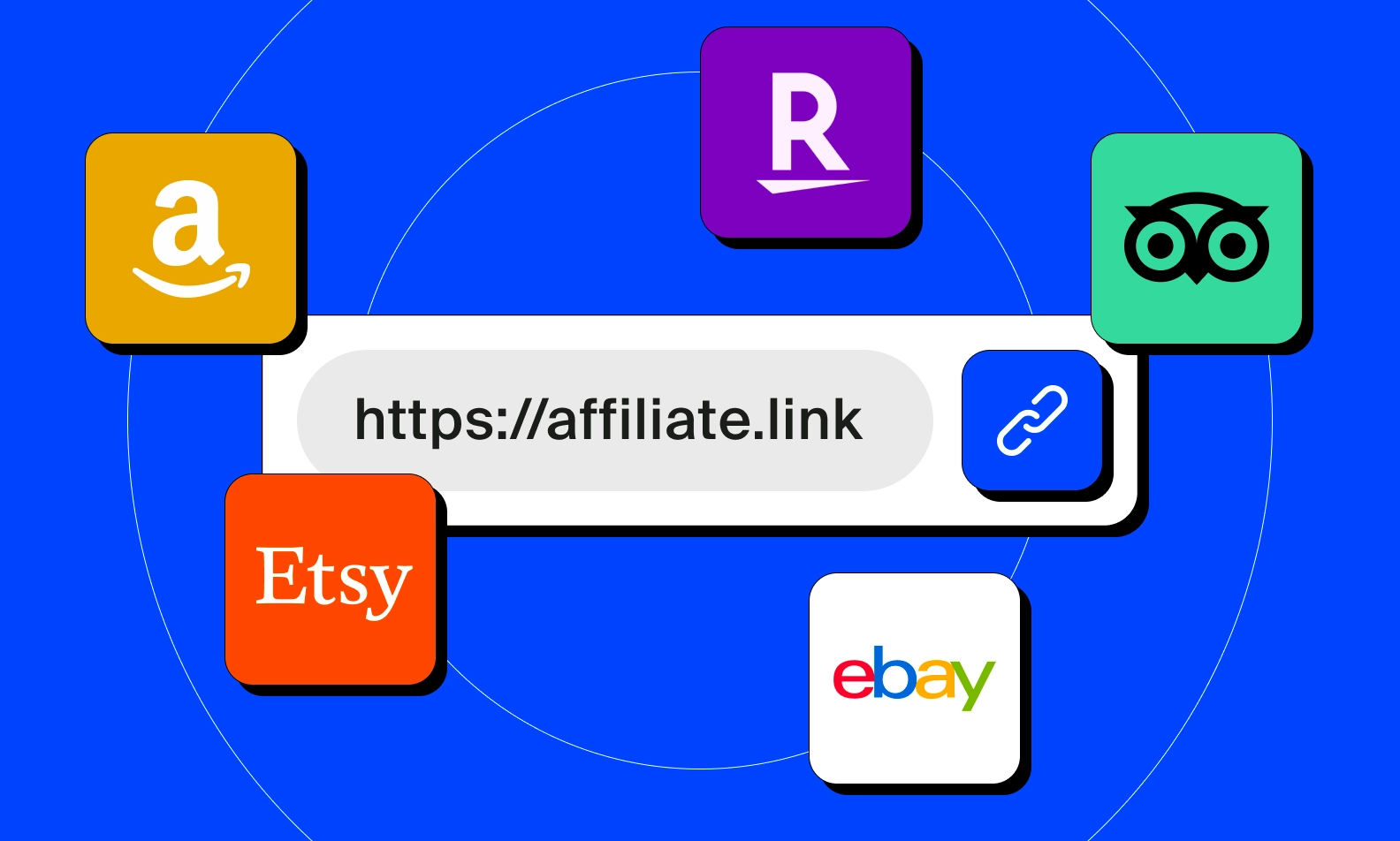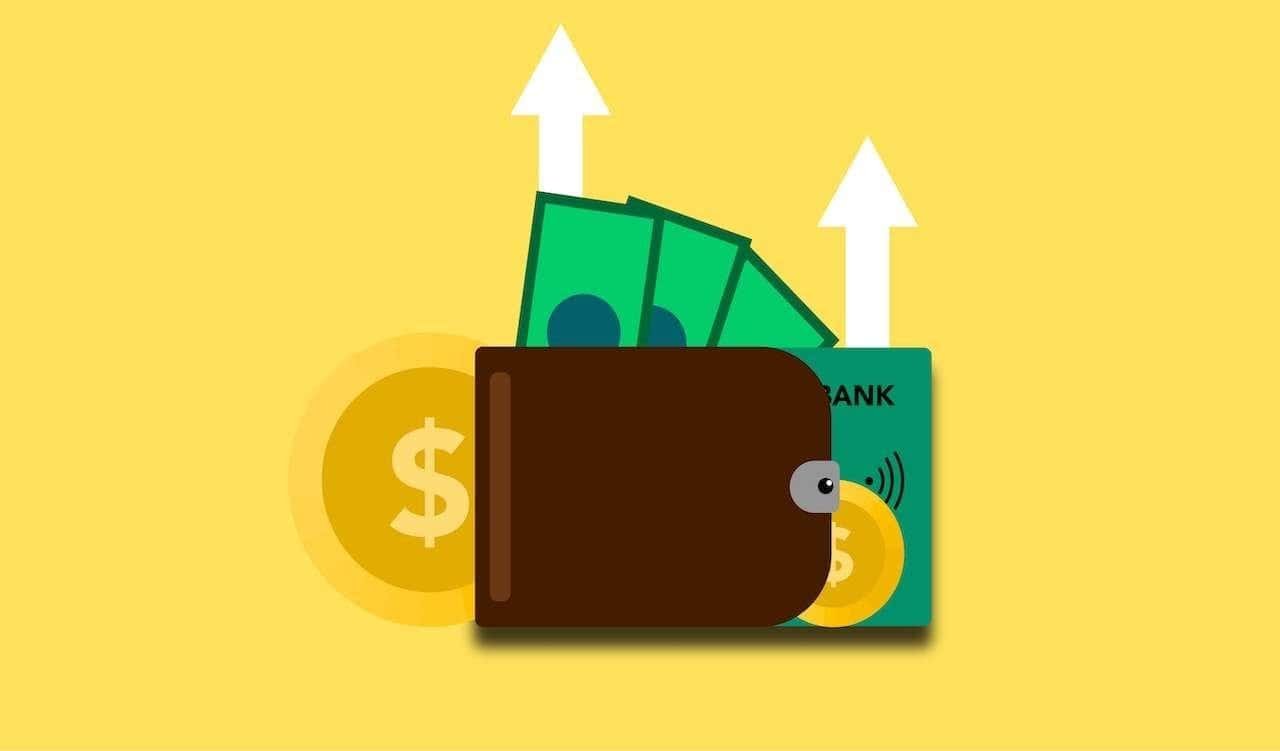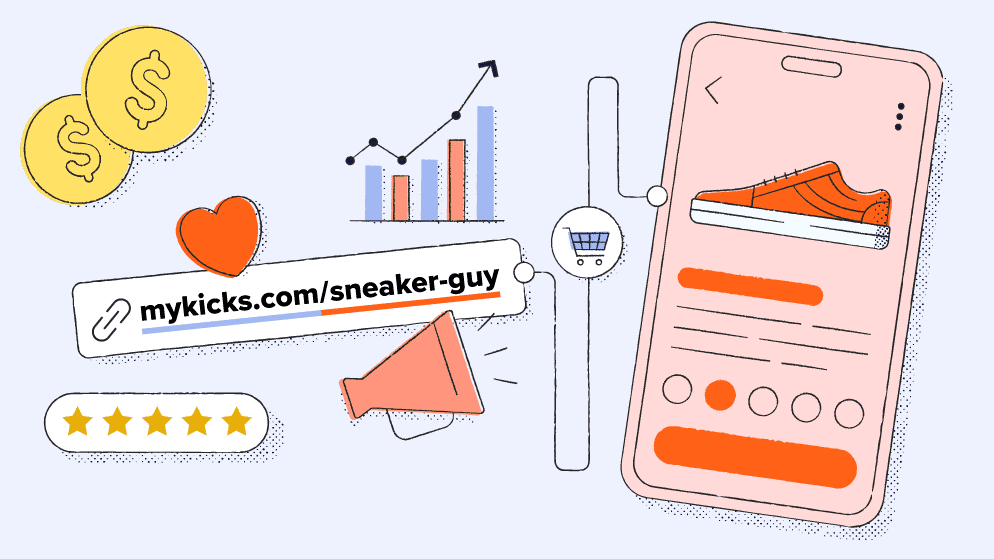Hello, hello, there! Let’s talk about affiliate marketing – one of the coolest ways to rake in some sweet passive income. You’re basically getting paid to recommend products you love. But here’s the catch – you need to track those affiliate links like a hawk to ensure you’re getting every penny you deserve. Let me break it down for you so you can level up your affiliate game and watch those profits soar!
What is an Affiliate Link and How Does This Magic Work?
An affiliate link is like a secret code that tells the merchant, “Hey, this awesome customer came from my recommendation!” It’s a unique URL with your special affiliate ID embedded in it. This ID acts like your digital fingerprint, allowing the affiliate program to track every click, lead, and sale you generate.
Think of it like this: You’re at a party, and you introduce your friend to this amazing new band you’ve been listening to. Your friend becomes their biggest fan, buys all their merch, and goes to every concert. You basically acted as an “affiliate,” bringing in a new customer, and in the world of affiliate marketing, you’d get a commission for that!

Unlocking the Secrets: Types of Affiliate Links to Boost Your Earnings
Affiliate links come in different flavors, each with its own superpowers. Let’s explore the most popular ones: Among these variations, some links offer higher commission rates, while others provide unique incentives like discounts or exclusive deals for customers. Understanding the nuances of each type can significantly enhance your marketing strategy and ultimately amplify the impact of affiliate links. By appropriately leveraging these tools, businesses can drive more sales and create mutually beneficial relationships with their partners.
Text Links: The Stealthy Ninja of Affiliate Marketing
Text links are masters of disguise, blending seamlessly into your content like a ninja in the shadows. They look like regular hyperlinks, but secretly, they’re packing your affiliate ID. You can use branded anchor text (like “SE Ranking”) or keywords related to the product/service you’re promoting.
Button Links: The Eye-Catching Magnet
Button links are like those irresistible “Buy Now” buttons that just scream, “Click me!” They stand out from the text with bold colors, clear fonts, and compelling CTAs. They’re attention-grabbing and super effective at converting visitors into buyers.
Image Links: A Picture’s Worth a Thousand Clicks
Image links add a visual punch to your affiliate promotions. These clickable images often have a button-like design, tempting users to click and explore further. Imagine a stunning banner showcasing the product you’re promoting – that’s an image link in action!
Links in Video Descriptions: Lights, Camera, Affiliate Action!
YouTube is a goldmine for affiliate marketing, and links in video descriptions are your ticket to success. Mention the product in your video, and then subtly guide viewers to the link in the description for more information. It’s a smooth way to convert your engaged audience into paying customers.
Pop-Ups and Push Notifications: The Surprise Guests
Pop-ups and push notifications are like those surprise guests who show up with exciting offers. Pop-ups appear on webpages with special deals and promotions, while push notifications deliver messages directly to a user’s device. Just be careful not to overdo it, or you might annoy your visitors!
Crafting Your Affiliate Links: A Step-by-Step Guide
Creating affiliate links is a piece of cake! Just follow these easy steps:
1. Join the Affiliate Program Party
First things first, sign up for an affiliate program that aligns with your niche and interests. Make sure it’s a program you genuinely believe in and offers products/services you’d confidently recommend to your audience.
2. Get Your Unique Affiliate Link (Your Secret Weapon)
Once you’re approved for the program, you’ll receive your unique affiliate link – your golden ticket to earning commissions. This link is precious, so guard it with your life!
3. Customize Your Links (Optional, But Super Cool)
Some affiliate programs allow you to create custom affiliate links with additional parameters for advanced tracking. Think of it as adding a personal touch to your links!
4. Implement and Test (Don’t Skip This Part!)
Time to put your links to work! Share them on your website, social media, email newsletters, or wherever your target audience hangs out. But before you unleash them into the wild, always double-check that they’re working correctly.

Becoming an Affiliate Rockstar: Two Paths to Success
There are two main ways to rock the affiliate marketing world:
Network Affiliate: One-Stop Shop for Multiple Brands
Affiliate networks are like giant marketplaces where you can find and join numerous affiliate programs from different brands. It’s a convenient way to access a variety of products/services without having to apply to each program individually.
Brand Affiliate: Direct Connection with Your Favorite Brands
If you have a specific brand you absolutely adore, becoming a brand affiliate allows you to work directly with them. You’ll have a more personalized relationship and might even get exclusive perks and deals.
Using Affiliate Links Like a Pro: Best Practices to Maximize Impact
Now that you have your affiliate links ready to roll, let’s make sure you’re using them like a seasoned affiliate marketer:
Balance Is Key: Don’t Overwhelm Your Audience with Links
Imagine you’re at a friend’s house, and they keep shoving product catalogs in your face. Not cool, right? The same goes for affiliate links. Don’t bombard your audience with too many links, or they’ll feel like they’re being sold to, not helped. Focus on providing valuable content, and sprinkle in your affiliate links naturally and strategically.
Descriptive Anchor Text and Context: Paint a Clear Picture
Anchor text is the clickable text that users see. Instead of using generic phrases like “click here,” use descriptive anchor text that tells users exactly what they’ll find when they click your link. For example, instead of “Learn more,” use “Learn more about SE Ranking’s awesome features.” Clarity is key!
Honesty is the Best Policy: Disclose Your Affiliate Relationships
Being transparent with your audience builds trust and credibility. Always disclose that you’re using affiliate links and may earn a commission if someone makes a purchase through your recommendations. A simple disclaimer like, “This post contains affiliate links, which means I may earn a commission if you purchase through them,” does the trick.
Clean and Readable Links: Keep It Simple, Sweetie
Long, messy affiliate links can be intimidating and look spammy. Use a link cloaking tool to shorten your links and make them more user-friendly. For example, instead of a long, ugly URL, you can use a shortened link like bit.ly/SERanking.
Follow the Rules: Stay on Google’s Good Side
Google has guidelines for affiliate links, and it’s wise to follow them to avoid penalties. Use the “rel=nofollow” attribute on your affiliate links to tell Google not to pass link juice to the merchant’s website. Also, ensure your content is high-quality and provides value to users beyond just promoting products.
Spreading the Word: Where to Promote Your Affiliate Links for Maximum Reach
Now that you’ve mastered the art of using affiliate links, let’s explore the best places to share them and attract potential buyers:
Your Website: Your Home Turf
Your website is your digital kingdom, and it’s the perfect place to promote your affiliate links. Incorporate them into blog posts, product reviews, tutorials, resource pages, or even banner ads.
Gated Content: The VIP Club
Offer valuable lead magnets, like ebooks or checklists, in exchange for email addresses. Once you have their attention, you can promote your affiliate links within the content or through follow-up emails.
Social Media: The Buzz Generator
Social media platforms like Facebook, Instagram, Twitter, Pinterest, and LinkedIn are buzzing with potential customers. Share your affiliate links in posts, stories, or even create dedicated groups/pages for your affiliate promotions.
YouTube Videos: The Visual Storyteller
YouTube is a powerful platform for visually engaging your audience. Mention the product you’re promoting in your videos, and include your affiliate link in the description box for viewers to easily find it.
Digital Products: Knowledge is Power (and Profit!)
If you create digital products, like online courses or ebooks, you can seamlessly integrate your affiliate links within the content, recommending tools or resources that complement your teachings.
Email Marketing: Nurturing Your Tribe
Email marketing is a great way to build relationships with your audience and promote your affiliate links. Share valuable content and sprinkle in your recommendations within newsletters, promotional emails, or even dedicated affiliate email sequences.
Paid Ads: Amplifying Your Reach
If you have a budget for advertising, paid ads on platforms like Google Ads or social media can help you reach a wider audience. Just make sure you’re targeting the right people and tracking your results to ensure a positive return on investment.
Multiple Affiliate Programs: Can You Juggle Them All?
Yes, you can absolutely use links from multiple affiliate programs on your website! This is especially helpful for comparison articles or “top 10” lists. However, a few things to remember:
- Respect Brand Policies: Always double-check each program’s terms and conditions to ensure they allow promoting multiple brands on the same page.
- Authenticity is Key: Only promote products/services you genuinely believe in and would use yourself. Don’t sacrifice your credibility for a few extra bucks.
- Balance and Transparency: Provide balanced reviews, even for products you don’t recommend, and clearly disclose your affiliate relationships to maintain trust with your audience.
- Avoid Overlinking: Don’t overload your content with too many links. Focus on quality over quantity, and strategically place your links where they make the most sense.
- Keep it Natural: Integrate your affiliate links organically into your content, so they feel like helpful recommendations rather than pushy sales pitches.
Tracking Your Affiliate Links: It’s All About the Data, Baby!

Tracking your affiliate links is crucial to understanding what’s working, what’s not, and where you can optimize for maximum profit. Here’s how to keep tabs on your performance like a pro: Utilize analytics tools that provide insights into click-through rates, conversions, and user behavior on your affiliate links. By analyzing this data, you can make informed decisions and refine your strategies for affiliate success through link tracking. Implement A/B testing to see which links perform better, allowing you to further enhance your marketing efforts. Utilize tracking tools to analyze click-through rates and conversion metrics, allowing you to identify which products resonate with your audience. By understanding these patterns, you can tailor your content to attract traffic to affiliate links more effectively, ultimately enhancing your revenue potential. Continuous testing and adapting your strategies will ensure you stay ahead in the competitive affiliate marketing landscape. Utilize analytics tools that provide real-time data, allowing you to assess which links drive the most traffic and conversions. By tracking affiliate links effectively, you can identify trends and make data-informed decisions to enhance your strategies. Regularly reviewing your performance will empower you to pivot quickly and ensure that your efforts yield the highest returns.
Affiliate Program Dashboard: Your Performance Hub
Most affiliate programs provide a dashboard where you can monitor key metrics like clicks, conversions, revenue, and earnings per click (EPC). This is your go-to place to see how your links are performing and identify areas for improvement.
Clarity and Hotjar: Unveiling User Behavior
Tools like Clarity and Hotjar create heatmaps that visually show you how users are interacting with your pages. You can see where they’re clicking, scrolling, and lingering, which helps you optimize your page layout and link placement for better conversions.
Google Analytics 4 (GA4): The Data Powerhouse
GA4 is your best friend for website traffic analysis. Track clicks on your affiliate links, monitor page views, average time on page, and bounce rate to understand how users are engaging with your content. This data helps you identify areas for improvement and optimize your pages for better performance.
SE Ranking: The SEO Superhero
If you rely heavily on SEO to drive traffic to your website, SE Ranking is your ultimate weapon. Connect it with GA4 and Google Search Console to get a holistic view of your affiliate link performance, including traffic sources, keyword rankings, and user behavior. This data helps you refine your SEO strategy and attract more qualified traffic.
UTM Tags: Tracking Like a Detective
UTM tags are like little tracking codes you can add to your affiliate links to provide more detailed information about the traffic source, medium, and campaign. This allows you to see which specific channels and campaigns are driving the most conversions and optimize your efforts accordingly.
Conclusion
Affiliate marketing can be a lucrative way to monetize your online presence, but it takes strategy, effort, and a bit of data-driven magic. By choosing the right programs, crafting compelling content, and tracking your links like a pro, you can maximize your affiliate earnings and turn your passion into profit. So, go forth, my friend, and conquer the world of affiliate marketing!
FAQs
How do I choose the best affiliate programs for my niche? Look for programs that align with your audience’s interests, offer high-quality products/services you believe in, and provide competitive commission rates and support.
What are some tips for writing effective affiliate content? Focus on providing valuable information that helps your audience solve problems or achieve their goals. Integrate your affiliate links naturally within the content, and be transparent about your affiliate relationships.
How often should I track my affiliate link performance? It’s a good idea to monitor your performance regularly, at least once a week or month, to identify trends, spot areas for improvement, and optimize your campaigns for better results.

